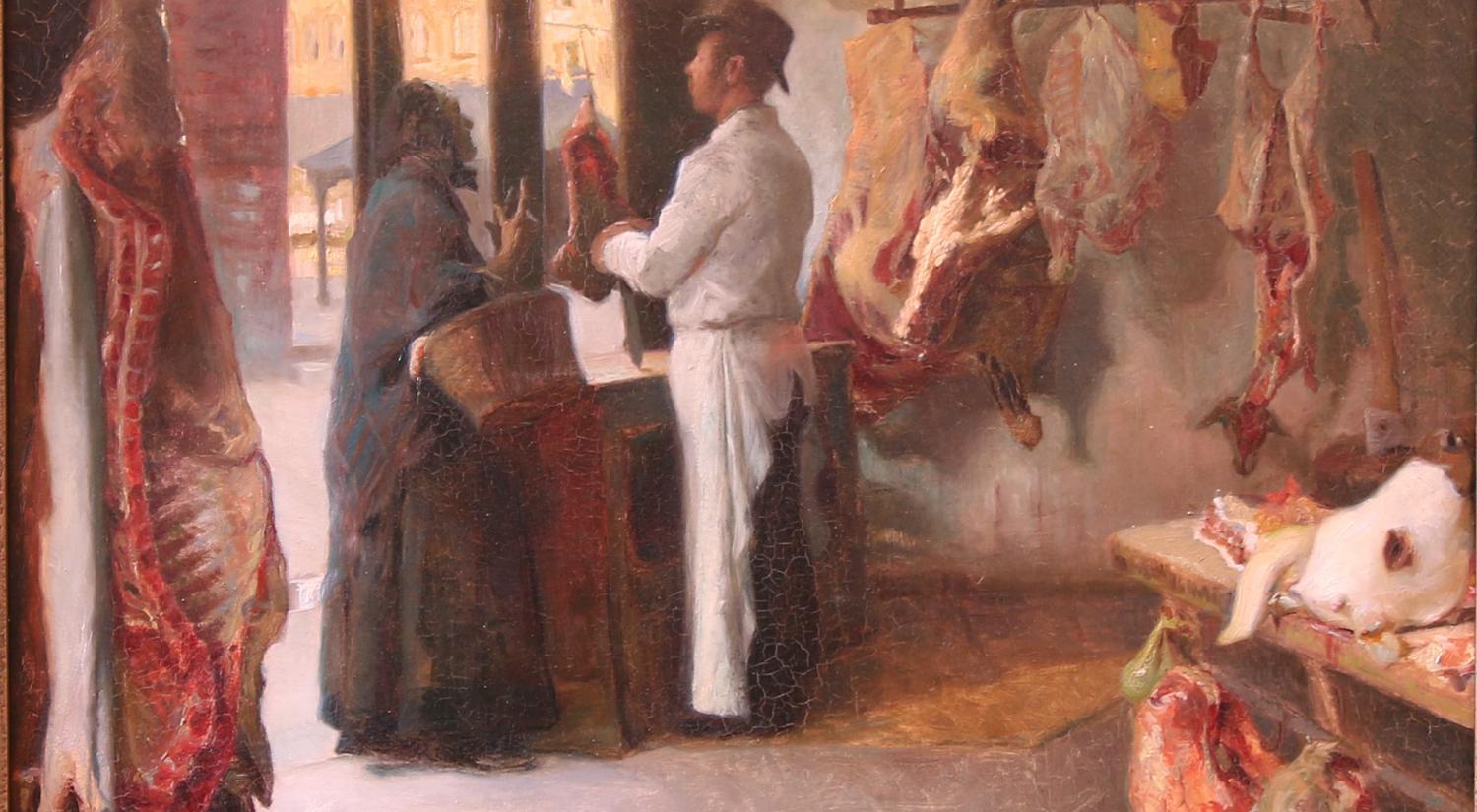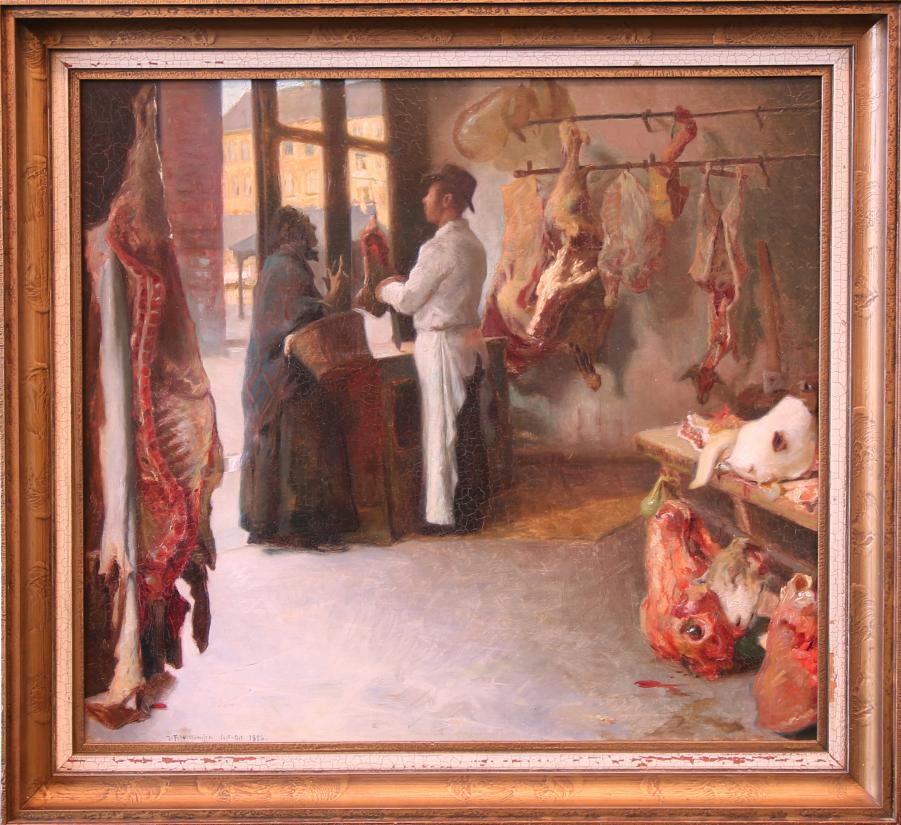The painting Slagterbutik ved Nikolaj Tårn (Butcher’s Shop by Nikolaj Tower) from 1886 is an early work by J. F. Willumsen, painted the year after his graduation from the Academy and Kunstnernes Studieskoler (the Artists’ School). With this acquisition, the J.F. Willumsen Museum adds an important piece to its collection, which includes few works from Willumsen’s early career.
Copenhagen’s ‘Stomach’
Until 1917, the area around Nikolaj Church in Copenhagen, where Willumsen found the inspiration for this painting, was home to a number of butcher’s stalls that had been built in the mid 19th century. As the city’s meat market, it was commonly known as ‘the Stomach’.
Willumsen describes the painting in his memoirs:
‘The picture “Butcher’s Shop by Nikolai Tower” was painted in “the stomach” by Nikolai Tower, towards Kirkestræde. Here I saw a woman come by daily, begging for “just a tiny piece of meat”. She did not get a piece every day, though, for the butcher was a haughty type and fed up with her constant pestering. What was interesting about the shop, of course, was all the red meat hanging there and the skinned calf’s and lamb’s heads that were laid out.’
About Slagterbutik ved Nikolaj Tårn
The painting has an elderly woman and a butcher as its central figures, but it is the meat that is hung up around them that forms the actual main motif. The raw, bloody meat brings a disturbing atmosphere to the room and frames the narrative. The macabre carnality is simultaneously fascinating and repulsive and also points to humanity’s animal instincts. Willumsen was fascinated with the visual and expressive qualities of the butchered animal carcasses in the butcher’s shop. This interest in the animalistic is a recurring theme in Willumsen’s practice.
Towards the expressive
Slagterbutik ved Nikolaj Tårn is a scene of life in a naturalistic style that is typical of its time, but it is highly interesting in the way it draws on the contrast between light and shade, the abrupt cropping of the image and the way it contrasts bright red with shades of green. In those regards, this early piece anticipates Willumsen’s later, more colourful and expressive style. Willumsen painted the picture before his trips to France and Norway, which had a major impact on his art. These sojourns inspired the more experimental style and palette that Willumsen is best known for today.
Owned by Willumsen’s in-laws
In 1889 Willumsen sold the painting to his father-in-law, C. H. Meyer, and that same year the art dealer Kleis commissioned a copy of it, which is now owned by the David Collection. It was not uncommon for Willumsen to create two near-identical works. The original has remained in the family of Willumsen’s in-laws since 1889, but has now been purchased for The J.F. Willumsen Museum where it adds to the museum’s broad collection of Willumsen’s diverse range of works.
The painting will be exhibited in 2019 at the J.F. Willumsen Museum in a dialogue exhibition juxtaposing works by Willumsen and sculptor Jørgen Haugen Sørensen, which will have the interest in the animalistic as one of its key focal points.




